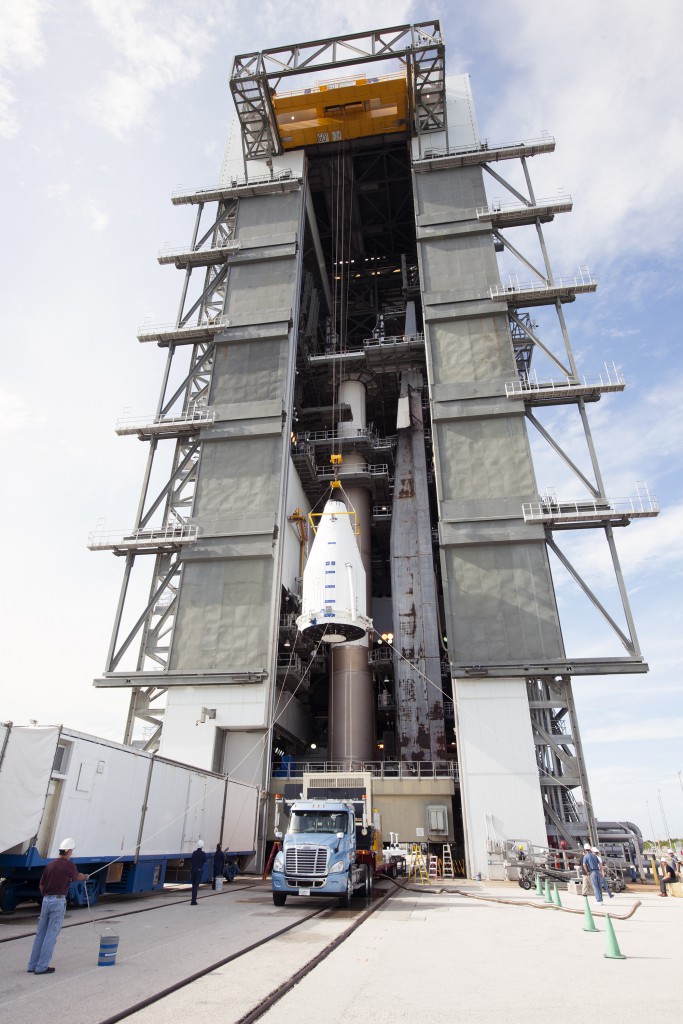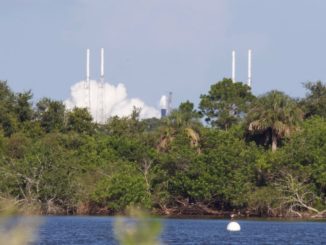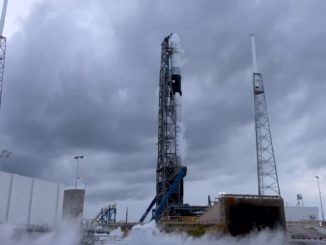
CAPE CANAVERAL — Loaded with over 7,300 pounds of goods for the International Space Station, a commercial Cygnus cargo vessel was mounted atop its Atlas 5 rocket booster today for launch Dec. 3.
Just over a week after stacking of the two-stage launcher began at the Vertical Integration Facility adjacent to the pad at Complex 41, the encapsulated payload was installed to top off the 194-foot-tall rocket this morning.
Shrouded in the 45-foot-long, 14-foot-diameter nose cone of the Atlas 5 and already packed full of its space station supplies, the Cygnus was trucked overnight from Kennedy Space Center’s Payload Hazardous Servicing Facility to Cape Canaveral Air Force Station.
An overhead crane at the VIF picked up the 16,517-pound freighter, maneuvered it into the Atlas integration building and set it in place for mating to the Centaur upper stage.
The rocket and spacecraft will undergo a tip-to-tail electrical checkout next week, followed by the Thanksgiving break and a series of final readiness reviews clear the vehicle for flight. Rollout to the launch pad occurs at 10 a.m. EST on Dec. 2.
This will be the heaviest payload ever launched by an Atlas rocket and the vehicle’s first flight dedicated to the International Space Station.
The OA-4 Cygnus is carrying 7,383 pounds of provisions to the station, not counting packing materials. The total mass with packing is 7,745 pounds.
Among the specifics:
-Crew supplies: 2,604 pounds
-Vehicle hardware: 2,220 pounds
-Science utilization: 1,867 pounds
-EVA gear: 500 pounds
-Computer resources: 192 pounds
The Dec. 3 launch will put the Cygnus on a path leading to intercept of the station on Dec. 6. Liftoff will be possible during a 30-minute launch window opening at approximately 5:55 p.m. EST (2255 GMT).
The launch window is much longer than other station-bound vehicles given the Atlas 5 rocket’s performance and its capability to navigate into the orbital plane of the laboratory.
See earlier Cygnus OA-4 coverage.
Our Atlas archive.



